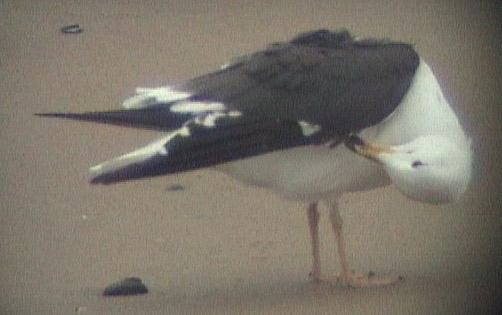 Lesser Black-backed Gull (graellsii & intermedius)
Lesser Black-backed Gull (graellsii & intermedius)
(last update: May 17 2015)
lbbg 1cy May
lbbg 1cy June
lbbg 1cy July
lbbg 1cy August
lbbg 1cy September
lbbg 1cy October
lbbg 1cy November
lbbg 1cy December
lbbg 2cy January
lbbg 2cy February
lbbg 2cy March
lbbg 2cy April
lbbg 2cy May
lbbg 2cy June
lbbg 2cy July
lbbg 2cy August
lbbg 2cy September
lbbg 2cy October
lbbg 2cy November
lbbg 2cy December
lbbg 3cy January
lbbg 3cy February
lbbg 3cy March
lbbg 3cy April
lbbg 3cy May
lbbg 3cy June
lbbg 3cy July
lbbg 3cy August
lbbg 3cy September
lbbg 3cy October
lbbg 3cy November
lbbg 3cy December
lbbg sub-ad Jan
lbbg sub-ad Febr
lbbg sub-ad March
lbbg sub-ad April
lbbg sub-ad May
lbbg sub-ad June
lbbg sub-ad July
lbbg sub-ad Aug
lbbg sub-ad Sept
lbbg sub-ad Oct
lbbg sub-ad Nov
lbbg sub-ad Dec
lbbg adult January
lbbg adult February
lbbg adult March
lbbg adult April
lbbg adult May
lbbg adult June
lbbg adult July
lbbg adult August
lbbg adult September
lbbg adult October
lbbg adult November
lbbg adult December
LBBG 3cy, May 04 2001, Le Portel, NW France.

This is a 3cy LBBG with advanced moult stage of the upper-parts for this age-class, but it may be average for intermedius LBBG from central Norway, as they may be more advanced after the partial spring moult.
P1-P6 show white tips on fresh primaries. P7-P10 are still second generation and P10 has no white mirror. In both graellsii and intermedius, arrested moult is a rare phenomenon. The Baltic LBBG race fuscus shows arrested moult in spring more often, and it is one of the prime clues to pick out a fuscus in a group western LBBG in NW Europe. When intermedius show arrested moult in the primaries, combined with advanced moult in the upper-parts, these birds can be mistaken for the Baltic race fuscus. At Le Portel, three such kind of LBBG were present early May 2001, including a very dark, gentle (female) intermedius. This bird's characteristics strongly approached those said to be diagnostic for fuscus.
The article of Lars Jonsson in BW (1998) gives excellent insight in the features and moult strategy of Baltic fuscus. However, it remains to be seen whether these points fully exclude intermedius.
After field research in spring 2001, it may be concluded that about 4% of 3cy graellsii and intermedius LBBG show arrested moult in early spring. For June-July 3cy and for adults, even higher numbers were encountered in Britain (see this page). In earlier publications (e.g. Barth), research in intermedius colonies in Norway proved that mahogany hue and grey tone of the upper-parts may approach fuscus. Therefore, it's hard to select diagnostic features to distinguish between the two (intermedius and fuscus). As it seems, much depends on the "feeling" that 'this might well be a fuscus we are looking at'.
Here, a 3cy LBBG is depicted with advanced primary moult: P1-P6 are new with white tips, P7-P10 are still second generation, with a brown hue, but not extremely abraded. Judging the primaries, all 10 primaries were moulted to second generation remiges in the last autumn moult, followed by a subsequent moult of P1-P6 in winter. The lack of extreme abrasion in the outer four primaries makes it hard to believe the outer primaries being already 1½ year of age (as would be the case in suspended moult in autumn).
The bill is yellow with a red gonydeal spot and a clear black band, running back to the base along the culmen (typical in 3cy). Legs are clear yellow. The tail is all white with a tiny chevron (hardly visible in the field, only on still video-images) on R6 and a tiny black spot on R2. All primary coverts are old, including those covering the new primaries (which is uncommon: normally primary covert moult follows corresponding primary moult).

The outer secondaries (S1-S6) are new, recently moulted, well in line with the primaries.
Normally, secondary moult only starts after the first primaries have been grown, to reduce a large gap in the wing, which would be inefficient during migration. Both primary and secondary moult has been arrested here and no gap in either the primaries nor the secondaries is present.
The head is pure white, like in summer plumage. The iris is blue-yellow.
The tertials are at least third generation, as are all scapulars and coverts (dark grey as in intermedius).
LBBG with arrested moult are sometimes hard to age. Most probably this is a 3cy bird and not a delayed 4cy LBBG, since:
- second generation P7-P10 are not extremely old, as might be expected in a delayed third summer. Regarding brown hue on the black base and regarding visible abrasion, P7-P10 are exactly as all second summer LBBGs present and surrounding this individual.
- The black bill-band runs back to the base of the bill along the culmen, as is common in second summer.
- The inner secondaries mostly are second generation, with a brownish centre and some spaghetti pattern at the upper half.